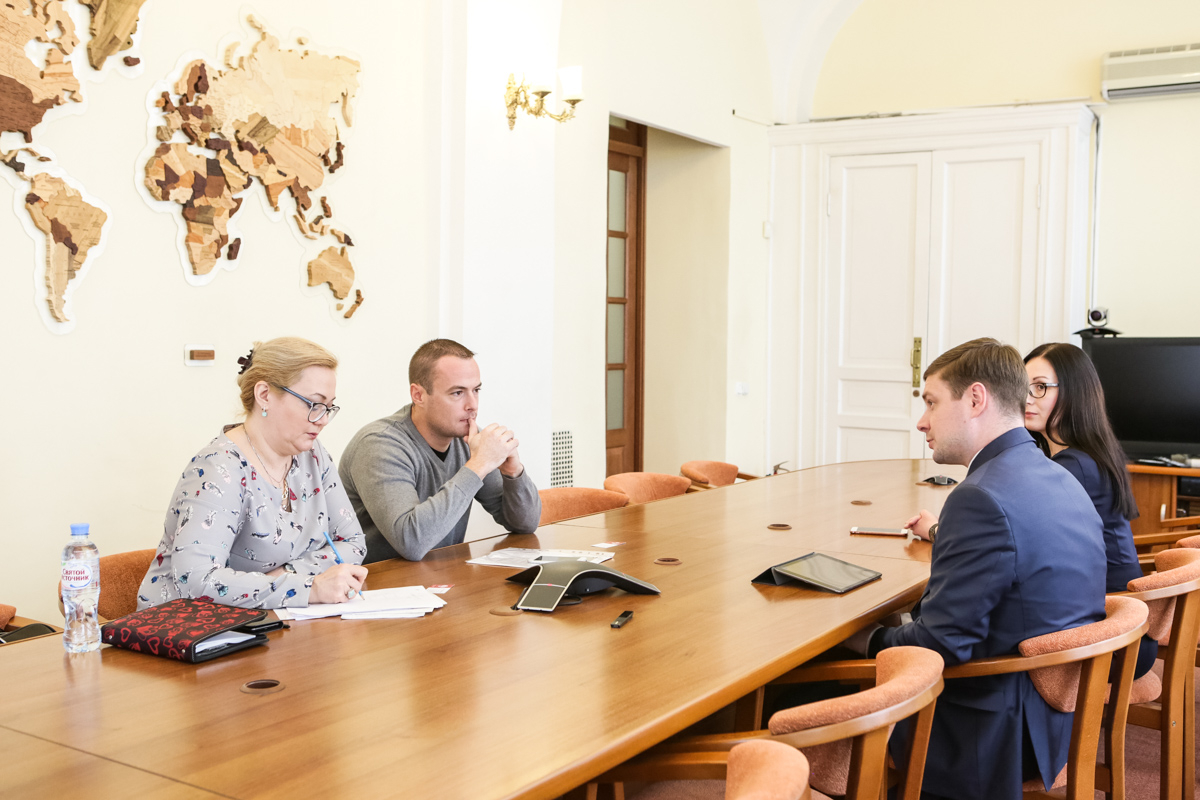Pierre Malinowski visited SPbU
Pierre Malinowski has visited SPbU and told us through his archeological projects.
For over 4 years, Pierre Malinowski has been excavating near Reims in the Champagne-Ardenne region in search of the remains of the soldiers of the Russian Expeditionary Force.
The project is intended to restore historical justice in honour of the Russian soldiers killed in France during the WW1. France knows little about expeditionary forces as is little known about them in Russia since it was forgotten after the October Revolution.
Pierre Malinowski, a French historian
The fields of military operations are now ploughed, and only in some places the traces of the trenches remain. In April 19, 1917, the Russian troops cleared the height Mon Spen that had been considered unscalable but therefore lost over 2,000 soldiers. It is not an easy task to find the lost soldiers of the Expeditionary Force on the territory of 200 ha. Pierre Malinowski had to study the maps of military operations to reveal the positions of the Germans and map them. When the excavation works started, the owners of the lands didn’t even think that there were remains of the soldiers one metre bellow the ground and therefore were against performing further excavations as they thought it would make the fields barren and poor to produce vegetation. A month later, many of them became inspired by the history of the Russian Expeditionary Force and joined the archeological excavations. Last year, Pierre Malinowski invited Russian students to come to France and take part in the excavations.
The archeologists discovered many personal belongings of the soldiers of the WW1, ammunition, and military equipment, say, general-purpose bombs. To defuse the bombs the archeologists called for bomb disposal engineers and police. All in all, about 2,000 missiles were disposed. Another obstacle that the archeologists faced was French legislation. First, you have to obtain a permission for excavations and call for police for investigation at the beginning of the works. Then the archeologists from the Ministry of Culture arrived at the place of excavations and the remains are sent to the laboratories of anthropologists to be forwarded to the Ministry of Defense that informs the relatives of the dead soldiers. It could take up to four years.
Pierre Malinowski found the remains of two Russian soldiers. One of the soldiers had a medallion that tells that the soldier belonged to the fifth battalion that was part of the third brigade that arrived from Yekaterinburg. He came from Yekaterinburg in 1916 and was killed in April 19, 1917. He was about 20 years old. “The boy travelled a distance of over four thousand kilometers to be killed in France, and it is a matter of several months when we can bestow honours to him, — said Pierre Malinowski. — His remains will be buried at the Russian cemetery in France, and we are going to unveil the monument to the Unknown Soldiers in May 19, 2018 that will symbolize the Russian soldiers killed in France”.
Another project that Pierre Malinowski is working on is a search for the soldiers of the Normandie-Niemen Squadron that are the French pilots to fight with the Soviet forces. Pierre Malinowski studied the archives and discovered an aircraft with a body of dead pilot near Smolensk. He is planning to dig him out in July and bury in France: two his grandsons live in France now (90 and 92 years old).
The Deputy Rector for International Affairs Sergei Andrushin thanked Pierre Malinowski for visiting St Petersburg University and told that we were glad to have experts in various fields who were ready to share their experience. “There are few experts in the field you focus on. If we continue our collaboration, there will more who will get interested, — said Sergei Andrushin. — We are glad that you are actively collaborating with Russia, including Russian universities. Collaborating with France is a high priority with us. We have many partners in France, among them is Sorbonne University we have a number of joint projects in education and research”.




